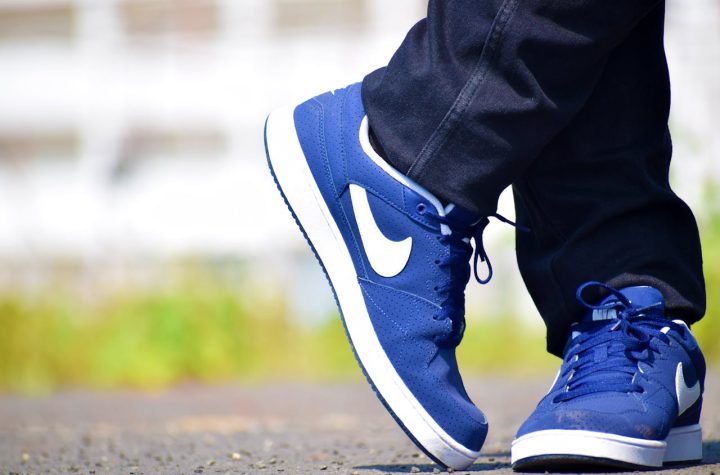
Flat feet are a common but often overlooked condition that can significantly affect daily life. If you’ve noticed your shoes wearing unevenly at the heels, your flat feet might be the reason. The way we walk and stand is largely determined by our feet, and any irregularities can lead to faster wear of your favorite shoes. In this article, we’ll explore what flat feet are, how they develop, and what they mean for your choice of footwear. Let’s step into the world beneath our soles!
Understanding Flat Feet
Flat feet, or fallen arches, occur when the arch of the foot is low or absent. This affects weight distribution across the foot, often causing discomfort during everyday activities such as walking or standing. Many people are unaware they have flat feet until they experience pain.
The foot’s structure is vital for balance and stability. Low arches can cause misalignment in the knees and hips, leading to issues beyond foot pain. Recognizing flat feet is essential for anyone experiencing related symptoms, as it could be the first step towards greater comfort and better shoe choices.
Check if You Have Flat Feet
Identifying flat feet can be done with a simple test. Wet your feet and step onto paper or cardboard. If you see a complete footprint with little to no arch in the middle, you likely have flat feet.
Another way is to stand on your tiptoes. If your arches don’t rise when you lift your heels off the ground, this may indicate flat feet. Note any discomfort, as this might suggest alignment issues.
If unsure, consult a healthcare professional for additional assessments to determine whether flat feet impact your daily life or shoe wear patterns. Confirming the condition can guide treatment or adaptation steps.
Causes of Flat Feet
Flat feet may result from various factors. Genetics play a significant role; if your parents had flat feet, you might inherit this trait, affecting your foot arches.
Aging is another factor. With age, the ligaments and tendons may weaken, causing the arch to lose shape. This loss of elasticity can lead to flat feet over time.
Injuries or conditions like arthritis may also contribute. Trauma can damage the arch-supporting structures, while inflammatory diseases might affect their function. Understanding these causes helps identify effective treatment options.
Considerations for Flat Feet Treatment
Treating flat feet involves several considerations. It’s essential to understand the severity of your condition, as symptoms range from minimal to significant pain affecting daily activities.
Non-urgent advice includes choosing supportive footwear with arch support and cushioning to alleviate heel pressure. Foot exercises can also strengthen muscles and improve stability.
For more targeted interventions, options include custom orthotics, physical therapy for flexibility and strength, and, in some cases, surgical options if conservative measures don’t provide relief.
Non-Urgent Advice for Flat Feet
Suspect flat feet? Start by noting how your feet feel during daily activities. Discomfort or fatigue may prompt you to reassess your footwear and posture. Supportive shoes can make a big difference.
Gentle stretching exercises may relieve discomfort associated with flat feet. Focus on calf stretches and toe curls to strengthen foot muscles, potentially easing pressure over time.
Consider using orthotic inserts in your shoes for added support. These custom solutions distribute weight evenly and reduce foot strain, making walking more comfortable without urgent medical intervention.
Treatments Available
Flat feet can be managed with various treatment options. Orthotic insoles, either custom or over-the-counter, provide support and cushioning, alleviating heel pressure.
Physical therapy is another effective approach. A therapist can guide exercises to strengthen foot and lower leg muscles, improving stability and reducing pain. Stretching routines may also enhance flexibility and comfort.
Footwear plays a crucial role in managing flat feet. Choosing shoes with proper arch support can reduce shoe heel wear and promote better foot alignment, potentially extending the lifespan of your shoes.
Surgery for Flat Feet
Surgery is a last resort when other treatments fail. It corrects foot structural abnormalities, restoring alignment and function. Various techniques exist depending on severity and individual needs.
Common surgeries include tendon transfers, fusions, or osteotomies to realign foot bones. Recovery times vary, with some patients needing months before returning to regular activities. Rehabilitation often involves physical therapy to strengthen muscles and improve mobility.
Consult a podiatrist specializing in such conditions to assess the need for surgery based on symptoms, lifestyle impact, and health status. This ensures care suited to your unique circumstances.
Self-Refer to a Podiatrist
If you’re experiencing excessive shoe heel wear due to flat feet, consider professional help. A podiatrist specializes in foot health and offers personalized advice tailored to your situation.
Self-referring allows you to take control of your foot care without needing a general practitioner’s referral. During an appointment, the podiatrist will assess your condition, discuss any pain, and recommend treatments.
Whether it’s custom orthotics, stretching exercises, or footwear adjustments, expert guidance can make a difference. Don’t let flat feet hold you back—consult a podiatrist today for effective solutions tailored to you!




More Stories
How to Clean Patent Leather Shoes
What Shoes to Wear with a Grey Suit
What color shoes to wear with a gray suit?